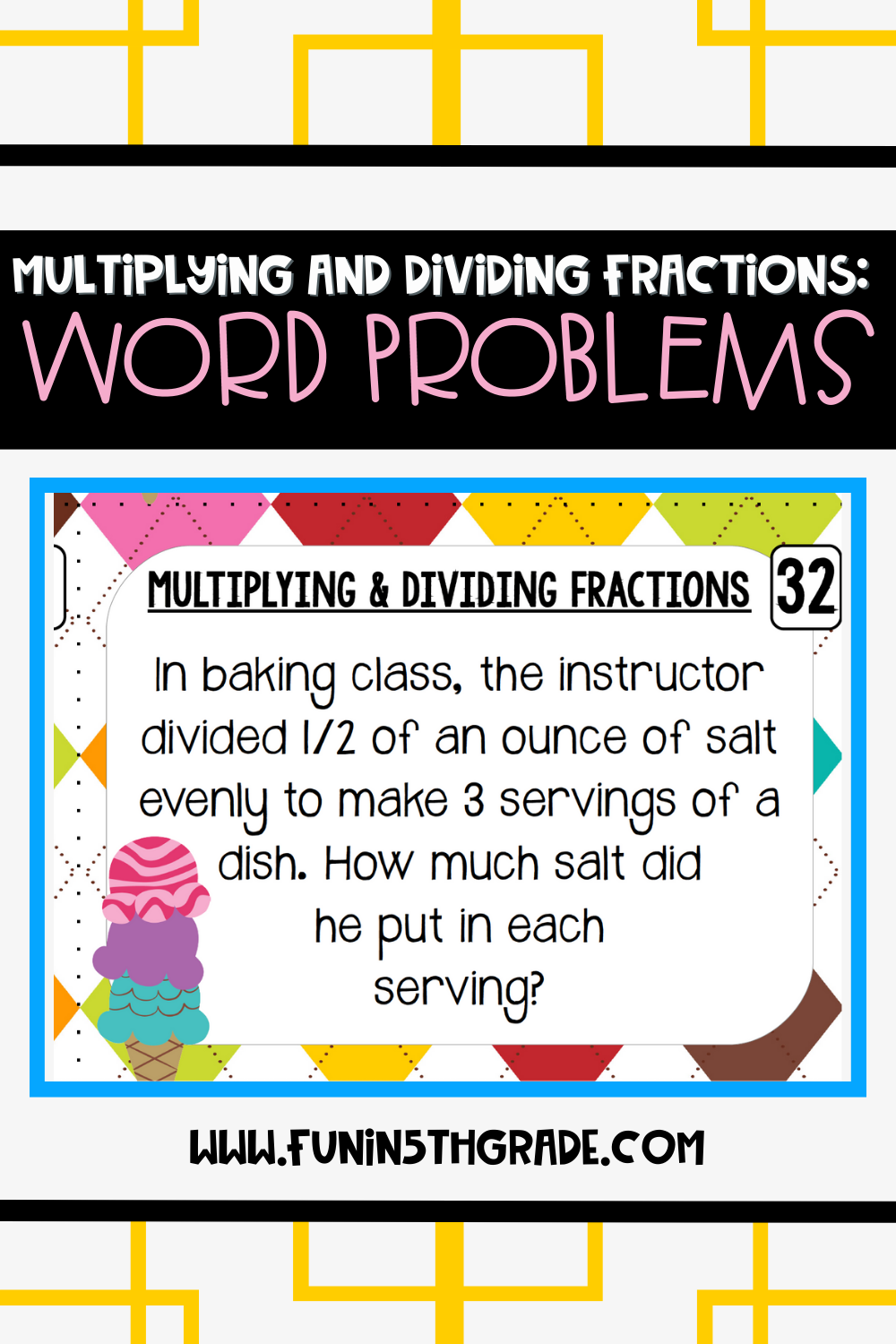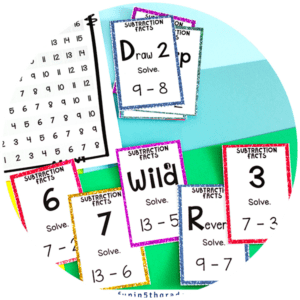If your students are getting stumped as they practice multiplying and dividing fractions in word problems, you may want to try some of these strategies!
Multiplying and dividing fractions can stump even the smartest of adults, so it is crazy to think that it’s something we were first introduced to in upper elementary.
Like most math problems, multiplying and dividing fractions are those types of skills that, when the problem is written out, it is easy to follow the rules and solve the problem, but when it is asked in a word problem, students (and adults) can get really confused quickly.
Today we are sharing some tips for working on word problems that ask students to practice multiplying and dividing fractions. You can use all of these tips or pick your favorites to supplement the fraction instruction you’re already using with your students.
Getting Started with Multiplying and Dividing Fractions
When I start teaching my students about multiplying and dividing fractions, we begin by focusing on each independently.
We do a variety of practice problems where I lay out the equation for them, and we work through them as a group.
Once we are managing them easily as a group, we practice in small groups and individually.
Once your students have the basics down, start introducing word problems.

Approaching Word Problems [7 Tips to Success]
When students have learned both multiplication and division of fractions, the word problems for them can get really tricky.
The main problem arises when students have to choose between the two operations because the keywords they are familiar with don’t necessarily identify the operations in these types of problems. (Ex. Seeing “of” or “times” really could be either operation, depending on what the question is asking).
Since I know this is something that stumps students, I like to work on it slowly.
Here are some of my best tips for approaching word problems with students!
Tip #1: Observe how problems are stated.
Have students practice determining which operation to use with word problems. Use task cards like these or example word problems and give students time to consider how the questions are asked. Encourage them to begin identifying what cues the problem might be giving them.
Tip #2: Use models frequently
When teaching each operation individually, as a class, we model and visualize the problems to set ourselves up for when we put them together. We draw pictures to help show WHY we are multiplying or dividing.
Tip #3: Work together as a class
Provide students with many example word problems and solve them together before moving on to allow them to try independently.
Pay close attention to where students are getting stumped or ask them to self-assess where they are running into trouble.
Tip #4: Use an anchor chart
One of the best ways I’ve found to introduce multiplying and dividing fractions in word problems is through an anchor chart.
The anchor chart includes examples of each type of problem and questions students should ask themselves as they work through it.
Questions will include…
- What is the problem asking me to do?
- Am I finding the total, or am I determining how many are in a group?
- Are you taking part of a part or part of a whole?
- Are you sorting, cutting up, or breaking anything apart?
Tip #5: Do group sorting activities using task cards like these.
First, display some task cards and work through them together, determining which operation would be best for each and why.
Draw pictures to show them concurrently why they need to be multiplied or divided
Once they seem to get it, give each group some fraction task cards. Encourage students to work through their stack of task cards and sort them out into which ones are asking for multiplication of fractions and which are asking for division.
Give students time to identify commonalities or trends in how the problems are written. Document their observations.

Tip #6: How We Solve a Word Problem [Create a Poster]
Another way to help students as they are multiplying and dividing fractions from word problems is to create a poster or anchor chart about the process of solving a problem. If you’ve tried several of the tips above as you’ve worked on these types of fractions with students, then this list will be very helpful as they venture off and begin solving equations on their own.
Note: This is the same process you can use as you work through problems as a full group.
- Read it once
- Reread it and focus on what the problem is asking you to do
- Underline the question and circle key info
- Draw a model (Students should be familiar with this as this most likely was part of the initial teaching of the operations.)
- Write down the operation you think will help you solve the problem
- Share your thoughts with a partner.
- Solve the problem by completing the model
- Ask: Does this answer make sense for what the question is asking?
- Discuss answers with partners and then with the class
Tip #7: PRACTICE, PRACTICE, PRACTICE!!!
Don’t be afraid to practice fraction word problems over and over.
You’ll want to practice together, in centers, small groups, with partners, and individually. The fraction resources you find in the store will help you to fill in all the gaps and give students what they need when they need it.
Personally, I love having the multiplying and dividing fraction task cards at the ready, as students can pick one to practice right after lunch or recess, or we can pull one out to do at the end of the day. I can also hand them out to early finishers.
These are definitely cards I would consider laminating and having ready to grab when the opportunity arises!
Have a Plan
Word problems can be really hard, especially when they are asking you to multiply and divide fractions, but these are skills that come up a lot in real life, so we need to make sure students ‘get it.’ Don’t be afraid to set up an ongoing plan to make sure students are practicing these types of problems regularly.
Hopefully, the tips above and the resources provided will provide you with exactly what you need to begin working through multiplying and dividing fractions with your students!








